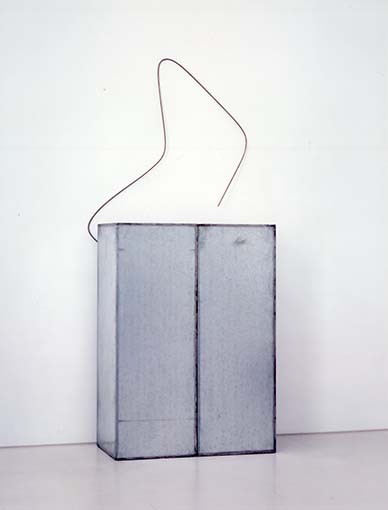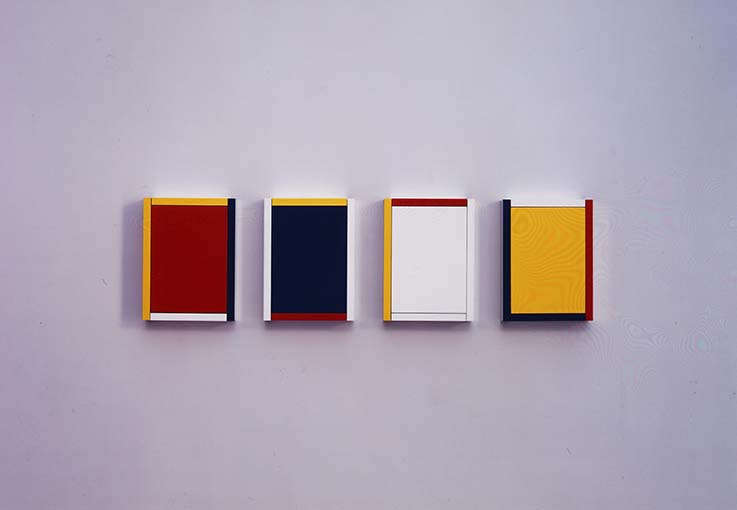
[Audio Guide]
Using four colors on five different sections, this work is composed of four paintings. When looking at the work, it is tempting to try and recombine the colored parts from the different paintings in our imagination. From the 1960s onwards, Imi Knoebel has continued to produce works that consider as important both the physical phenomena of the painting that we see with our eyes and the conceptual painting formed in our mind. Through his works we are able to vicariously experience his artistic process as he experiments with coloristic results drawn from the huge variety of possible combinations of colors and components. The title, DIN, means German Industrial standards, and is known as JIS (Japanese Industrial Standards) in Japan. Knoebel uses materials that are abundant in everyday life, and attempts to transform them into aesthetic objects possessed of a playful spirit.
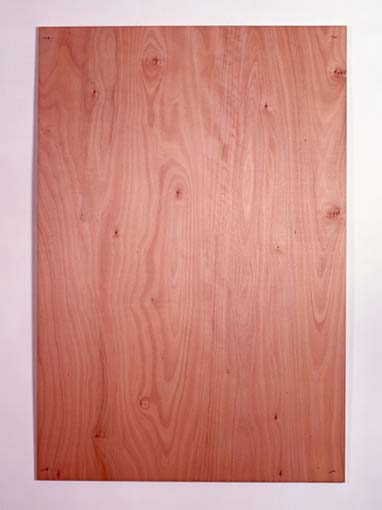
[Audio Guide]
Three panels of identical size have been stacked together. The central panel has been treated with phosphorescent paint, so that when the museum is closed (for example), and the lights go down, another kind of light shines out. And yet we are unable to see it. That of the goal of this work— things which are visible at certain times are invisible at others. Color is also like this, as the color of something becomes visible when the wavelengths of the other colors are absorbed by the object. In conjunction with the darkness inside the stacked panels, this work raises questions about visibility and invisibility. Energy is absorbed from the surrounding light, transferred to the dark interior of the panels and stored there. We can imagine such a process, and the slight swelling in the center is perhaps intended to suggest this accumulated energy.
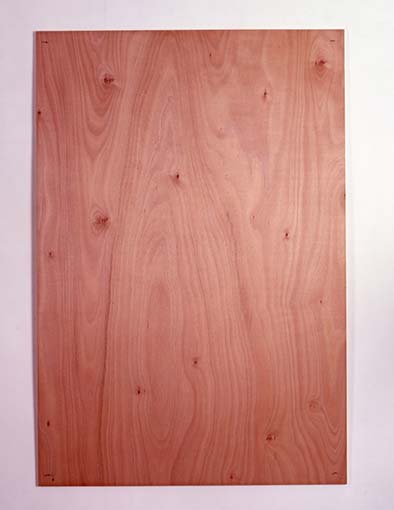
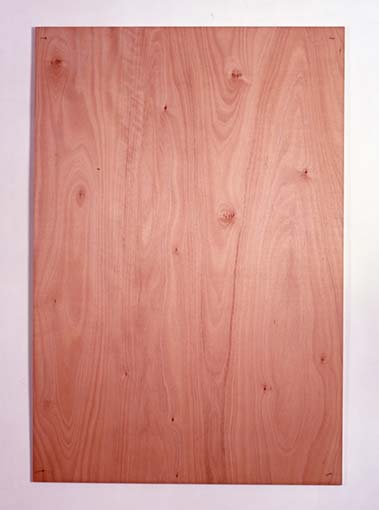
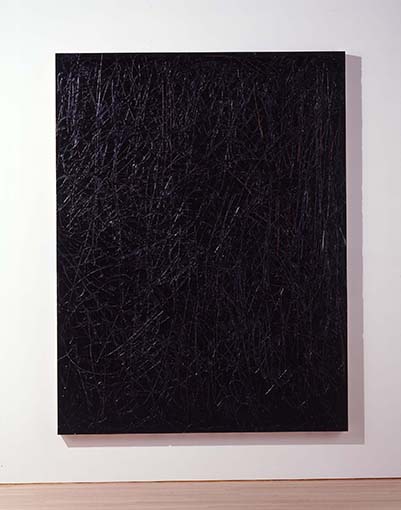
[Audio Guide]
Deep lines have been carved into a piece of wooden board that has been painted over with black. These etched marks appear like brush marks made by painting, conjuring the image of an artist’s violent gestures. However, this natural connection is severed by the color. Additionally, in painting, colored pigments are layered onto one another in an additive process, whereas this work was created through the subtractive process of carving in the creation of a black painting surface that is largely devoid of color. The piece resembles a woodblock used in woodblock printing; in that process, the block is like a negative that is able to receive many different colors. A German artist, Knoebel produced this type of black work between 1991 and 1992 during the Gulf War. At that time, missile tracks could be seen streaking across the night sky on television reports. Such a faraway occurrence is devoid of any sense of reality, but Knoebel has used these materials to bring it right before our eyes.
